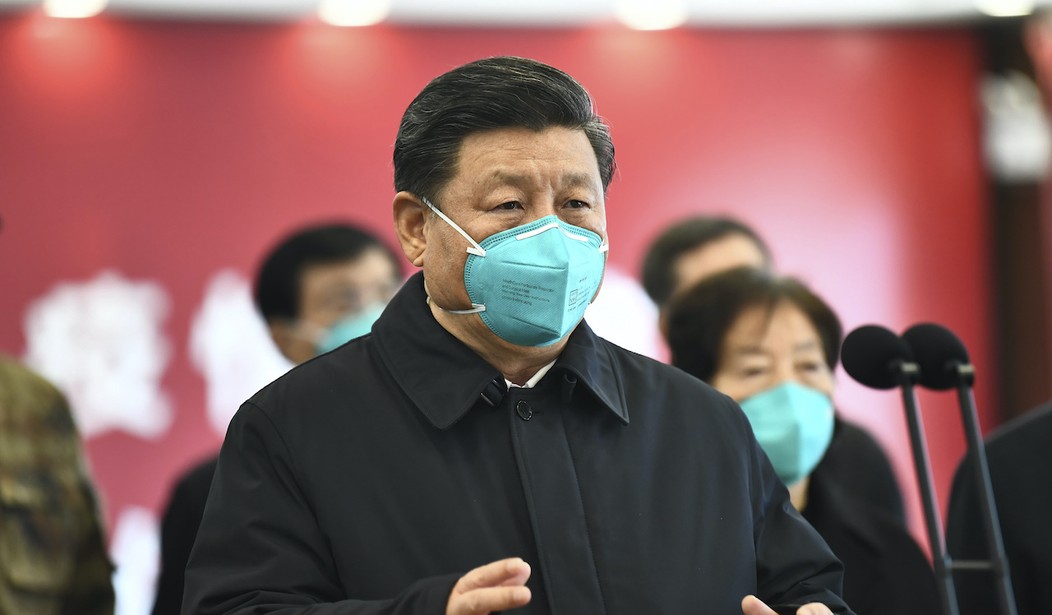China’s pursuit of “zero COVID” policies has officials locking people into factories, shopping malls, and convention centers. The sweep of the Omicron variant, despite its milder acute form than previous variants, has Beijing reimposing massive lockdowns in several of its largest cities. The New York Times reports that Omicron has now broken out in areas that contain around two-thirds of China’s population, and that CCP officials are desperate to snuff out the wave.
Why not let it play out? Other nations adopted far less stringent methods to ride out the Omicron wave. Even the US’ irrational policies in Omicron didn’t come close to the lockdowns and commerce restrictions that got imposed in the first months of the pandemic. China’s heath care system, however, is a house of cards — and their vaccination programs have fallen far short of those in the West:
Even as countries in the West are now loosening or abandoning mask mandates and other measures, Chinese officials are implementing some of their most stringent methods. That is in large part because China can’t afford to lift restrictions.
The government has been concerned about comparatively lower rates of vaccination among China’s older adults. The country also has far fewer intensive care hospital beds compared to its population than most industrialized countries. In China’s vast rural areas, hospitals and medical facilities are often basic, and a major outbreak could quickly overwhelm hospitals.
The United States and other Western countries have suffered far higher rates of infection and deaths over the past two years than China, and still have higher rates now. But the seven-day average rate of new cases in mainland China, now at 1,584, has more than quintupled in recent days.
Ahem. That’s the official figure from Beijing, but it’s almost certainly a lie. China’s government has invested itself in the narrative that they have beaten or at least controlled COVID-19 in its own borders. In pursuit of that narrative, they have been anything but transparent about their data since the moment that the pandemic began in Wuhan. If they are locking down as many people and cities as they are, we can guess that the case rates are much higher than 1600 a day — especially with Omicron.
This also tells us, as Glenn Reynolds commented last night, that China’s vaccines are unreliable. We knew that already from the data in countries that relied on Sinopharm and Sinovac for their own vaccination programs, decisions driven by China’s diplomatic efforts to advance their COVID-19 narrative. China couldn’t control that data, as it has in its own country where they report massive success in vaccinations.
Let’s not forget that this is not the first re-lockdown that China has imposed, too. The Delta wave prompted a lockdown in August, and they started lockdowns in January when Omicron first appeared on the horizon. At that time, the NYT reported — from China’s own claims — that their vaccination programs had been a smashing success:
China’s ability to control the virus has come a long way since the pandemic started: It has inoculated nearly 1.2 billion people and set up a nationwide electronic health database for contact tracing.
Yet it has continued to rely on the same authoritarian virus-fighting methods from early 2020, including strict quarantines, border closings and lockdowns. These have led to food and medical shortages and growing questions about how much longer its zero-Covid strategy, the last in the world, can continue.
How can China have inoculated 1.2 billion people in January and then have a “comparatively low” inoculation rate among older adults in March? Its estimated population is 1.44 billion as of the present, according to UN data. The older population should have been their first target for vaccination, too. The reason they may be relying on “the same authoritarian virus-fighting methods” is probably because those claims of success on all other fronts is just propaganda rather than reality. Their vaccines don’t work, their vaccination programs haven’t delivered as promised, and their contact tracing can’t be very good if they have to rely on blunt-force policies such as these:
China’s virus containment strategy is focused on moving quickly to lock down buildings or neighborhoods. In response to even a single case, officials may seal all the entrances to a store, office building or even convention center. Everyone inside must then stay there for up to several days as they are tested for the coronavirus and sent into isolation if their results are positive.
In Shanghai, many foreign-owned businesses stockpiled mattresses last week in case their employees were trapped in their factories or their offices this week. Multinationals there then told their employees to work from home this week.
In Guangzhou, the municipal government on Friday sealed off the world’s largest convention center, which was holding a beauty products exhibition. Videos circulating on Chinese social media platforms showed crowds of stranded convention goers milling around and looking for exits in attempts to evade the lockdown.
They’re going to the mattresses, not in The Godfather sense but literally. If China’s contact tracing system worked as advertised, why do this? Why not just have people go straight home and lock down in place where they live until the contact tracing can find the at-risk cases?
This counts for more than just tongue-clucking in the West, by the way. All of those factories will have to shut down production, and that means trouble for already-troubled supply chains:
Pandemic restrictions in two of China’s largest cities, Shenzhen and Shanghai, imposed Sunday have forced Apple suppliers including Foxconn to suspend production, per Nikkei Asia.
Why it matters: The seven-day lockdown of key port city and southern tech powerhouse Shenzhen and the partial lockdown of financial hub Shanghai and other Chinese cities over COVID-19 spikes will exacerbate supply chain and inflation issues, per Axios’ Dan Primack.
- Shenzhen’s port will slow down and with so many goods manufactured in China, there is the double whammy of factories closing, Primack points out.
- The city is home to the China headquarters of Huawei and a vital manufacturing facility for Foxconn — the main Chinese maker of the iPhone and other Apple products, which announced it was pausing operations due to Shenzhen’s lockdown, Bloomberg notes.
It’s not just the factories but also the ports. This might be a third strike for China as a supplier to Western firms, too. American companies source goods and materials out of China because of their lower cost, but all of these delays add up on the balance sheet too. Now that China is falling back to massive lockdowns again — for the second time in three months — those companies have to consider that the cost of relocating their supply chains may actually be less in the long run than keeping them in China.
Let’s hope that this relocation process gets accelerated as China’s economy decelerates yet again, because we can be pretty sure that this won’t be their last lockdown.








